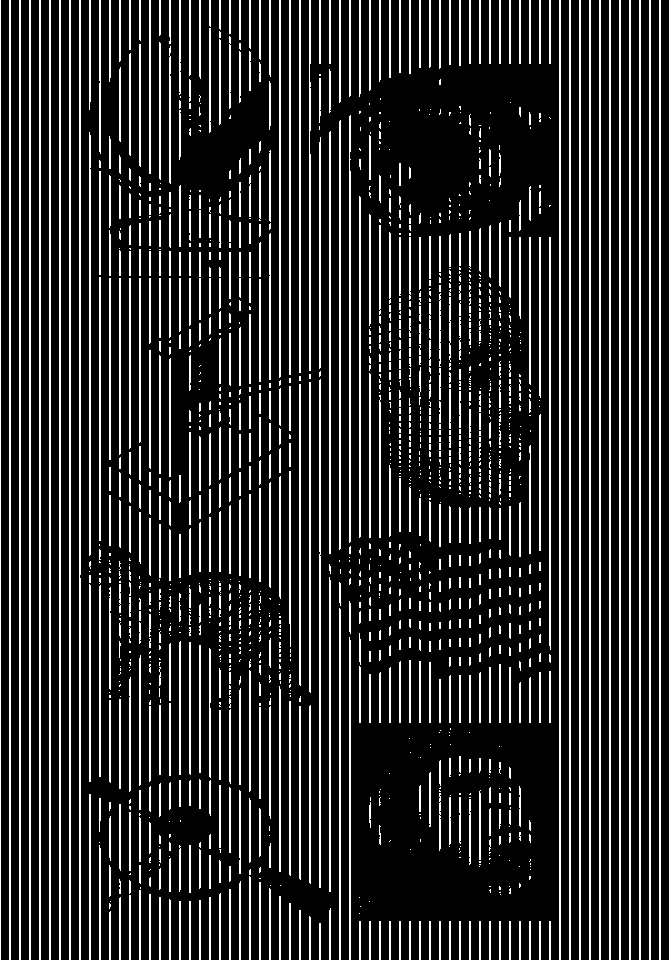Things look and operate in certain ways and we can easily overlook that other explanations, interpretations or experiences of the same phenomena exist simultaneously with our own. One's own sense of reality often carries the potential of tunnel vision and once you think you’re closing in on what is real, you’re only further isolating what you believe to be the truth from everything else. My counter thesis to conventional truth-seeking is to look outside what is real, at the unreal or the unfathomable. Filtering out reality has the potential to become an antidote to various types of blindness to the world. Sieving implies removal, but it is also entails revealing, investigating or analyzing – like looking under a rock that you’ve never before lifted. One world becomes two new worlds. And upon return what before seemed real may now appear alien and stripped of the meaning it used to have, but with previously unseen prospects of significance or understanding. Filtering out reality should perhaps be understood more as filtering in reality, since what passes through a sieve is a condensed selection of the original input.
To wrestle with the obfuscation of reality is to challenge what is seen but unknown, to penetrate the highly visible but not understood, and to reveal the hidden and restricted. The paradox that things can become indecipherable when seen up close is to me a bewildering and enchanting irony that in many ways mirrors the experience of navigating real life. In my research I try to intentionally steer towards the boundaries of any given context in order to be able to identify social, physical, cultural, visual and sonic components. My goal will most often be to sensorially shift, replace, transform or in other ways reimagine the grounds from which we interpret a certain portion of the world, qua act within it. I do this not in order to cause chaos or revolt, but rather to adroitly shift a given spectacle, translating it into a new light and in turn giving it new meaning for the interpreter.
The shutter and the image sensor of a camera separate us from the real world just as a printed page of text consisting of lasered ink and letterforms do. These separations are useful, because they are containers of time that have the ability to sieve through certain phenomena leaving us with what we need to see, hear, know, remember, etc. Technology’s ability to discretely perform this kind of reduction is similar to perhaps the most famous filter of all, the force that drives diversity on our planet from interactions between organisms and their environments – evolution. Filters are ubiquitous and without them, we couldn’t perceive anything at all. Making choices when communicating visually is like applying a set of filters that either entrap the interpreter or ignore them. Tinkering with the filters of the world as a methodology can be approached in a myriad of ways and different constellations. It starts simply with playing with what’s between you and your environment.
Special thanks to my advisors, faculty and collaborators: Dan Michaelson, Adam Sexton, Paul Kockelman, Manuel Miranda, Geoff Han, Neil Goldberg, Ben Hagari, Sarah Oppenheimer, Dana Karwas, Ryan Waller, Paul Elliman, Royce K. Young Wolf, Liam Bellman-Sharpe, Ross Wightman, Jack Self, Danilo Rosich, Tobias Frere-Jones, Nina Stoessinger, Matthew Carter, Allen Hori, Geoff Kaplan, Michael Ferguson, Patrick Porto, Amanda Hermansen, Sewon Roy Kim, Cody Boyce, Rune Rasmussen, Kellie Lynch, Kenyon Adams, Asher Young, Angeline Wang, Maryna Zevako, Orysia Zabeida, Oliver Kartak, Michael Huber, Katharina Uschan, Christian Schlager, Jakob Hütter, Jakob Figo, Frederik Plesner, Frederik Wendt, Julian Bittiner, Sheila Levrant de Bretteville and Nontsikelelo Mutiti and the cohort of Graphic Design 22’, 23’, 24’ and 25’.
